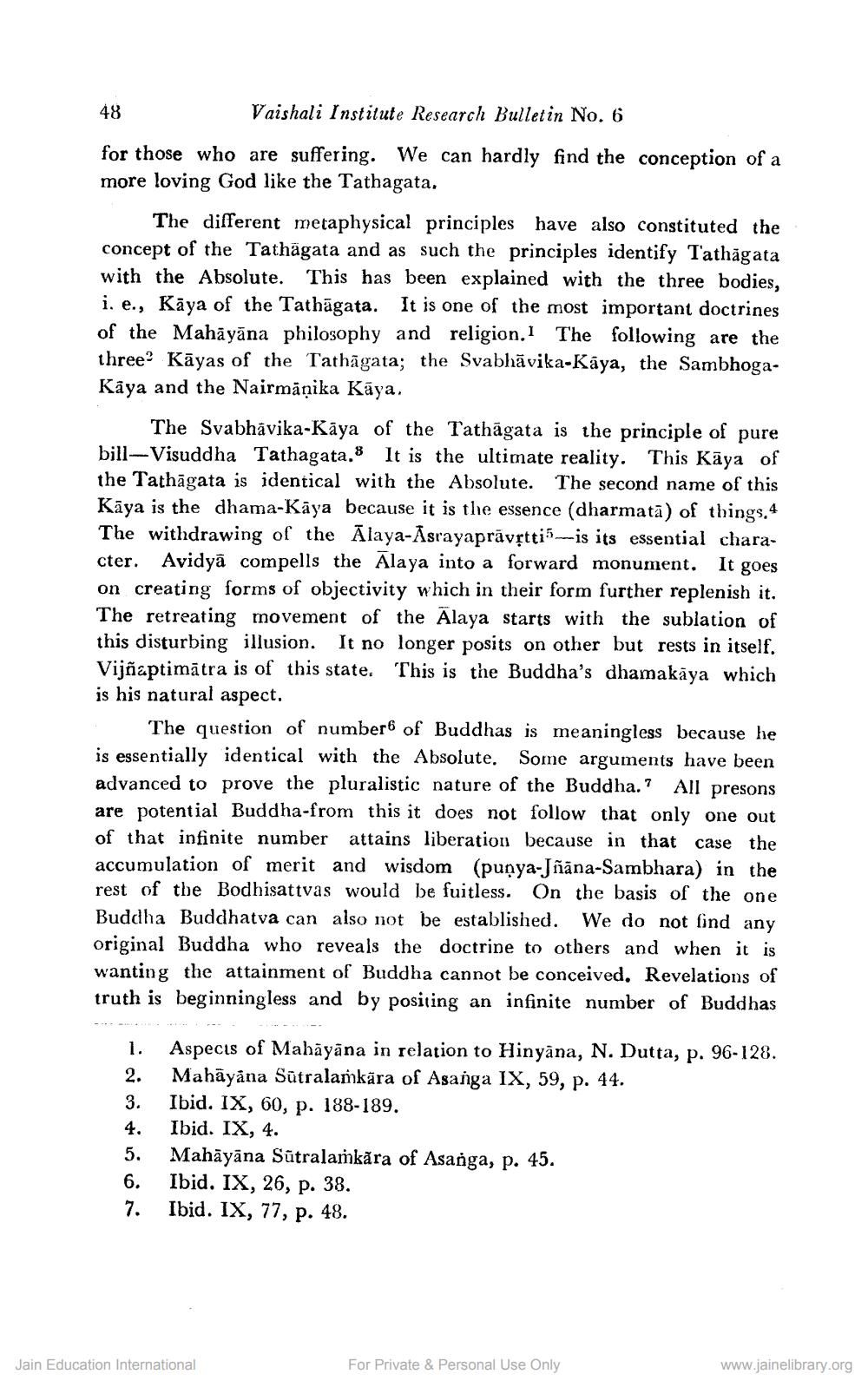________________
48
Vaishali Institute Research Bulletin No. 6
for those who are suffering. We can hardly find the conception of a more loving God like the Tathagata.
The different metaphysical principles have also constituted the concept of the Tathāgata and as such the principles identify Tathāgata with the Absolute. This has been explained with the three bodies, i, e., Kāya of the Tathāgata. It is one of the most important doctrines of the Mahāyāna philosophy and religion. The following are the three? Kāyas of the Tathāgata; the Svabhāvika-Kāya, the SambhogaKaya and the Nairmānika Kāya.
The Svabhavika-Kāya of the Tathāgata is the principle of pure bill-Visuddha Tathagata. It is the ultimate reality. This Kāya of the Tathāgata is identical with the Absolute. The second name of this Kāya is the dhama-Kāya because it is the essence (dharmatā) of things. 4 The withdrawing of the Ālaya-Asrayaprāvștti-is its essential character. Avidyā compells the Alaya into a forward monument. It goes on creating forms of objectivity which in their form further replenish it. The retreating movement of the Alaya starts with the sublation of this disturbing illusion. It no longer posits on other but rests in itself. Vijñaptimātra is of this state. This is the Buddha's dhamakāya which is his natural aspect.
The question of number of Buddhas is meaningless because he is essentially identical with the Absolute. Some arguments have been advanced to prove the pluralistic nature of the Buddha.? All presons are potential Buddha-from this it does not follow that only on of that infinite number attains liberation because in that case the accumulation of merit and wisdom (punya-Jñana-Sambhara) in the rest of the Bodhisattvas would be fuitless. On the basis of the one Buddha Buddhatva can also not be established. We do not find any original Buddha who reveals the doctrine to others and when it is wanting the attainment of Buddha cannot be conceived. Revelations of truth is beginningless and by positing an infinite number of Buddhas
1. 2.
4. 5. 6. 7.
Aspects of Mahāyāna in relation to Hinyana, N. Dutta, p. 96-128. Mahāyana Sūtralamkära of Asanga IX, 59, p. 44. Ibid. IX, 60, p. 188-189. Ibid. IX, 4. Mahāyāna Sutralamkıra of Asanga, p. 45. Ibid. IX, 26, p. 38. Ibid. IX, 77, p. 48.
Jain Education International
For Private & Personal Use Only
www.jainelibrary.org




